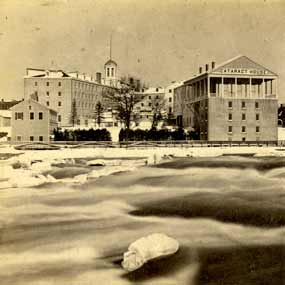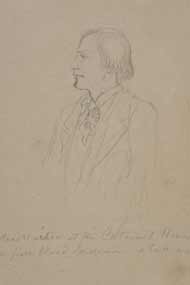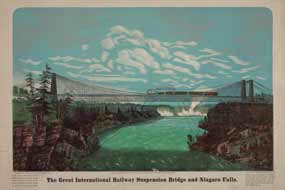
Niagara Falls Public Library
Niagara Falls, one of the seven natural wonders of the world, is often thought of as awe-inspiring and a must-do tourist destination for people from all over the world. The power of Niagara Falls is more than the natural phenomenon of the Falls themselves, or the harnessing of the hydropower of the Niagara River, but importantly, the tension between slavery and freedom during the years of the Underground Railroad.
Prior to and during the Civil War, the Niagara River was one of the final destinations before entering Canada for persons escaping slavery in the South. The network of assistance for freedom seekers arriving in Niagara Falls included African Americans who worked as wait staff in the flourishing Niagara Falls hotel and tourism industry. According to J.H. French in 1860, “No places of equal size on the Continent have a greater amount of hotel accommodations than these.” The waiters who assisted freedom seekers on their journey to freedom in Canada made Niagara Falls one of the most important locations of the powerful struggle between slavery and freedom.

Beginning in the early 1840s, many of the waiters in the major hotels in Niagara Falls, including the Cataract House and the International Hotel, had been born in southern states and most likely had escaped from slavery on the Underground Railroad themselves. The presence of southern hotel guests, and enslaved servants at the hotels in close proximity to the abolitionist waiters and their allies, often created the perfect opportunity. At a moment’s notice, the waiters were ready to spring into action to help people across the Niagara River to freedom. One of the people who quite often assisted freedom seekers, was the Head Waiter at the Cataract House, John Morrison, who frequently ferried freedom seekers across the Niagara River himself.
In one such instance, a Southerner and his party arrived by carriage in front of the Cataract House and proceeded to try and capture an escaped slave named Martha. The Cataract House waiters who were nearby did not hesitate to immediately jump into action. She ran down the slippery ferry steps, while waiters and her pursuers were right behind her. She jumped in the boat, the waiters pushed the boat from the shore, and it glided just beyond her capture. Although it was well known that the waiters were involved in the Underground Railroad, the waiters did not lose their employment.

Library of Congress
In 1848, the Suspension Bridge was built as a carriage and footbridge slightly north of the Falls. It was rebuilt in two levels to incorporate rail traffic in 1855, and became a major crossing point that funneled thousands of people from slavery to freedom. Harriet Tubman crossed the Suspension Bridge on one of her many trips from the south, bringing freedom seekers to Canada. In November 1856, she brought Joe Bailey and others out of Maryland. As they crossed the bridge, Harriet shouted, “Joe, you’re in Queen Victoria’s dominions! You’re a free man!” Joe rose his head up, his eyes streaming with tears and began to sing and shout as the train reached freedom on the Canadian side.
Last updated: August 14, 2017
